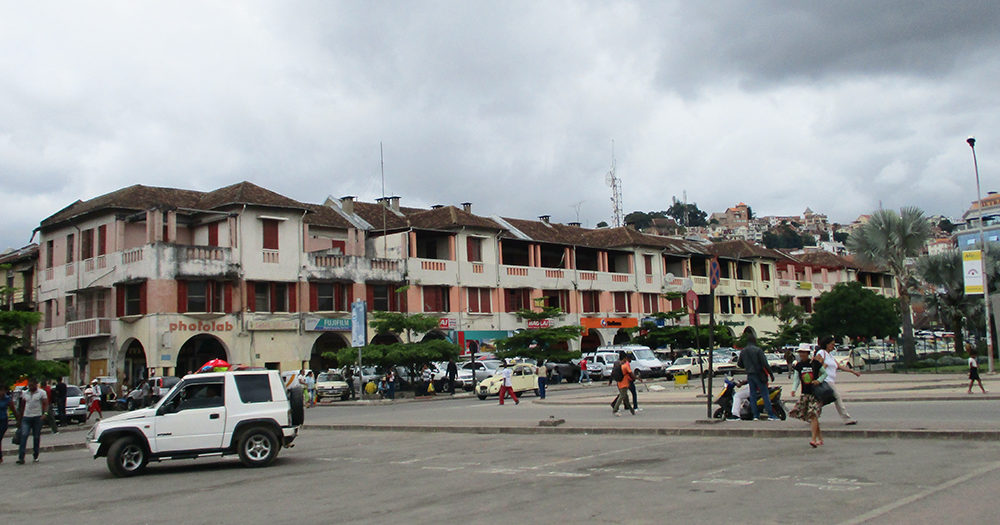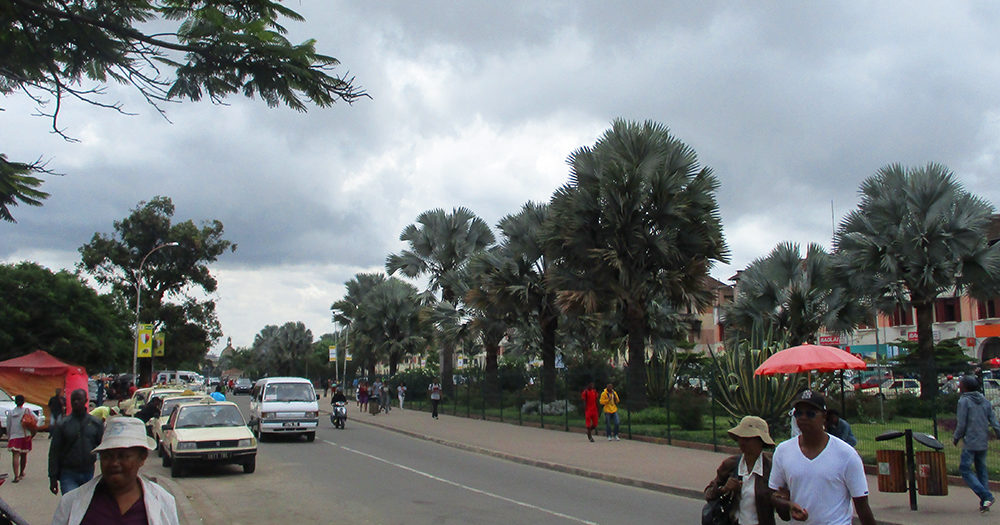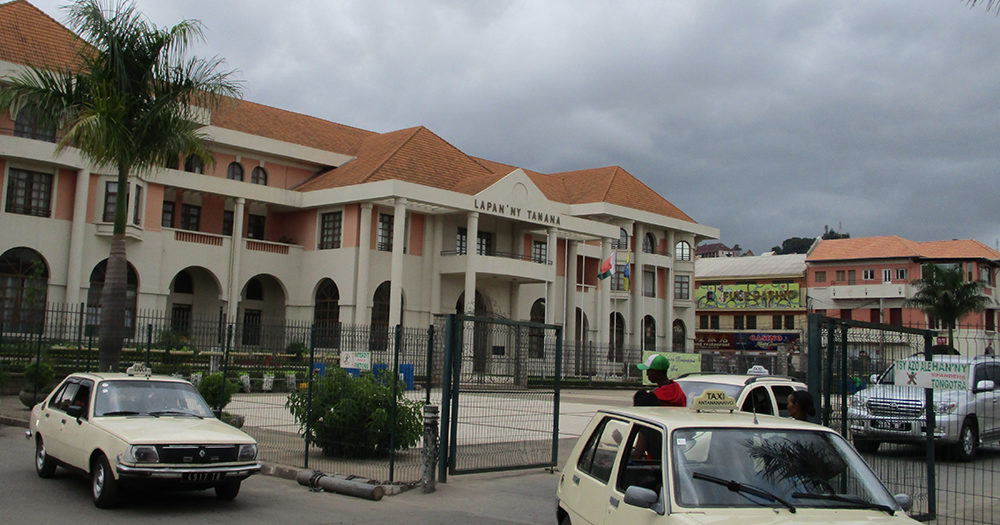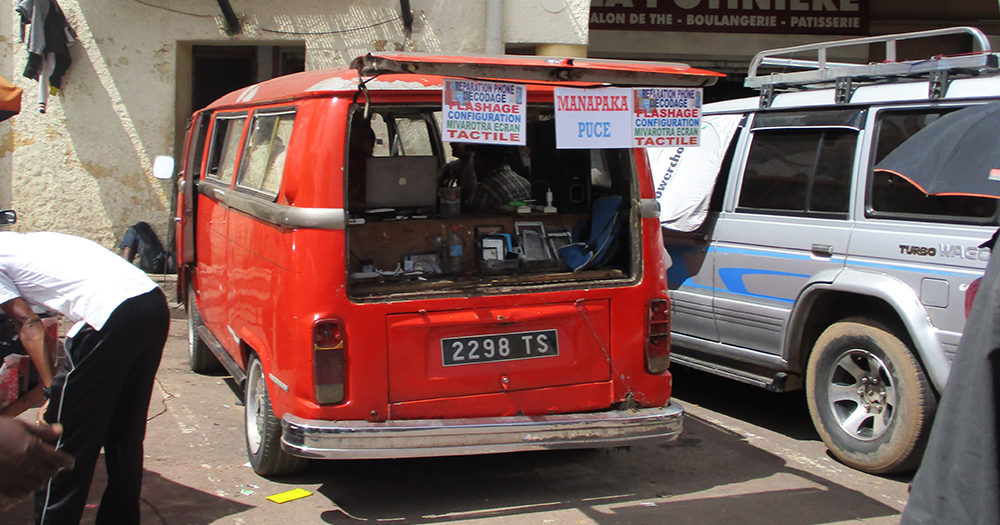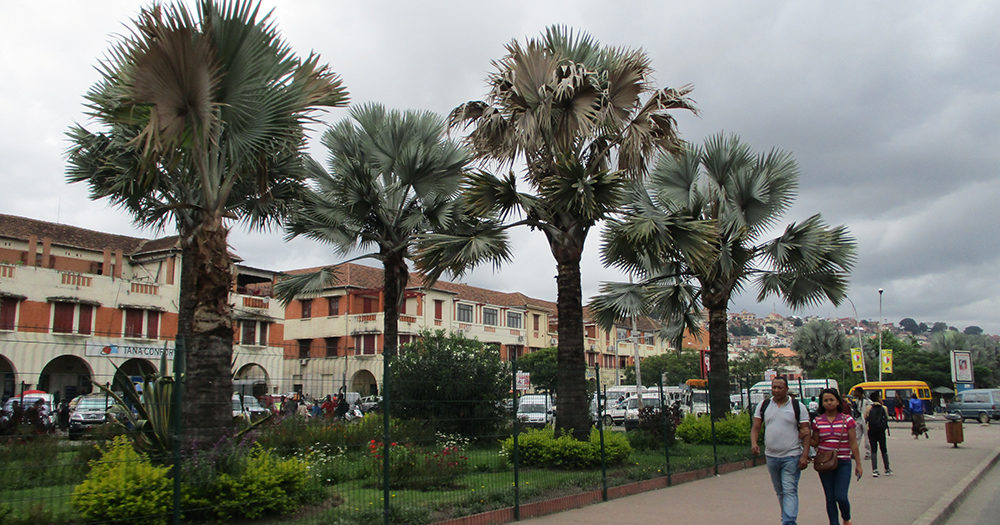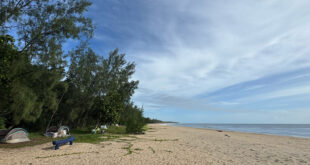Situated in the middle of the capital Antananarivo, it is the center of all events: The Street of Independence, French Avenue de l’Indépendance. It is located in the lower town, in the district Analakely, and is a former boulevard from French colonial times. Even today it is still considered a Malagasy promenade. Restaurants, cafés, shops, and bars line up here and provide a very colorful day and nightlife. All major companies and restaurant chains in the city have their flagship stores along the street. It does not matter if they are banks, airlines, pizzerias, or grocery stores. If you fancy yourself in Madagascar, you will need a store on Street of Independence in Antananarivo!
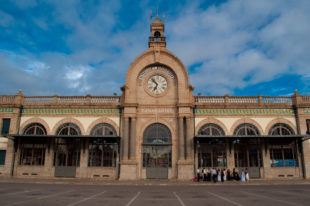
CC BY-SA 2.0 Hery Zo Rakotondramanana
The approximately one kilometer long Street of Independence was built under General Gallieni before the Second World War. It begins at the Soarano railway station, which was built in monumental style between 1908 and 1910. The architect of the station was a Frenchman named Fouchard. At the beginning of the 20th century, there was a large fountain next to the station, to which the name soa rano, in English “good water”, is still owed. In 2009 the station was completely renovated. At present, it houses some shops and souvenir shops in addition to the ticket sales for the occasional trains. From the station, the Street of Independence runs south-east until it becomes the Street of 26th June 1960, just before the famous Zoma market. The date marks the day of independence of Madagascar, thus, the two streets are something like namesakes.
Halfway between the Soarano railway station and the market square is the town hall (French Hotel de ville) of Antananarivo. It was originally also built during colonial times in 1936 but fell victim to fire during riots in 1972. Only in 2008 new construction works started, so that the current town hall – built in the old style – could be inaugurated in 2011.
The Street of Independence has two wide lanes, which are separated in the middle by a green area. During colonial times flower beds were cultivated here. Today palm trees grow here in a kind of small park. On both sides of the Street of Independence are colonial houses, whose entrances are covered by wide arcades built in 1937. Thus, they also provide dry feet while shopping during the rainy season. Over the years, a large number of street shops have developed between arcades and lanes. From parked cars and buses, but also simply from street vendors sitting on their blankets under colorful parasols. Need to fix a car, a hairdryer, or a smartphone? Here you are sure to find the right craftsman for the job. Rather have a portrait painted of yourself? No problem either. In addition, there are plenty of flying dealers who offer almost everything you can imagine, from sunglasses and dish towels to small snacks and freshly squeezed fruit juices. Not least because of the often dense crowds, the Street of Independence has become increasingly notorious for pickpocketing in recent years. One should not appear here with openly worn jewelry or valuables. But those who simply walk around dressed and without a smartphone can confidently stroll here. On the Street of Independence, one is surely closer to the Malagasy life of the capital than anywhere else in Antananarivo.
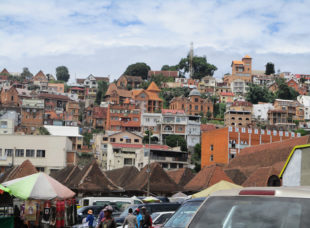
Near the transition to the Street of 26 June 1960, on the left-hand side, there is a group of small houses with pointed hipped roofs made of red brick. They are original buildings from 1925, which were built at that time for the weekly market Zoma. The market, which always takes place on Fridays (Malagasy zoma, hence the name), had extended over several streets of the quarter in recent decades. At its best, the Zoma was the largest open-air market in Africa. However, as the rampant market activity led to more and more traffic disturbances in Antananarivo, the Zoma was abolished in its original form in the 1990ies. What remains today are the original buildings in which the smaller but no less colorful and loud version of the Zoma still takes place.
Diagonally opposite the Zoma, there are the Thousand Stairs of Tana. By the way, in Madagascan, the Street of Independence is called Araben’ny Fahaleovantena. But in public, the name is hardly used. The French term Avenue de l’Indépéndance is mainly used.
 MADAMAGAZINE Your Magazine about Madagascar
MADAMAGAZINE Your Magazine about Madagascar
